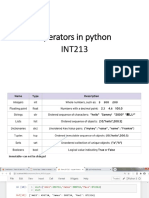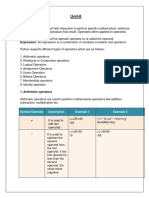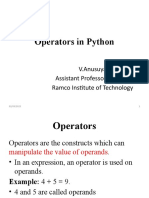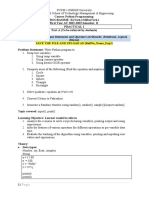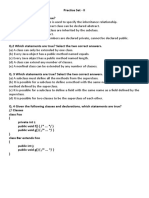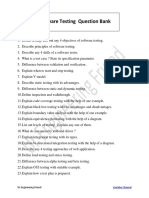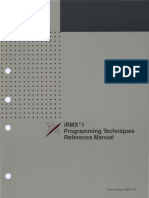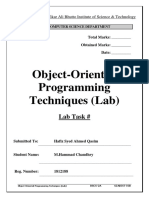0% found this document useful (0 votes)
65 views13 pagesPython Operators Guide
This document discusses various operators in Python programming including mathematical, relational, logical, bitwise, membership, and identity operators. It provides examples of using each type of operator and notes that Python does not use ++ and -- increment/decrement operators like other languages, but instead uses augmented assignment operators.
Uploaded by
Mayur KinraCopyright
© © All Rights Reserved
We take content rights seriously. If you suspect this is your content, claim it here.
Available Formats
Download as PDF, TXT or read online on Scribd
0% found this document useful (0 votes)
65 views13 pagesPython Operators Guide
This document discusses various operators in Python programming including mathematical, relational, logical, bitwise, membership, and identity operators. It provides examples of using each type of operator and notes that Python does not use ++ and -- increment/decrement operators like other languages, but instead uses augmented assignment operators.
Uploaded by
Mayur KinraCopyright
© © All Rights Reserved
We take content rights seriously. If you suspect this is your content, claim it here.
Available Formats
Download as PDF, TXT or read online on Scribd
/ 13
